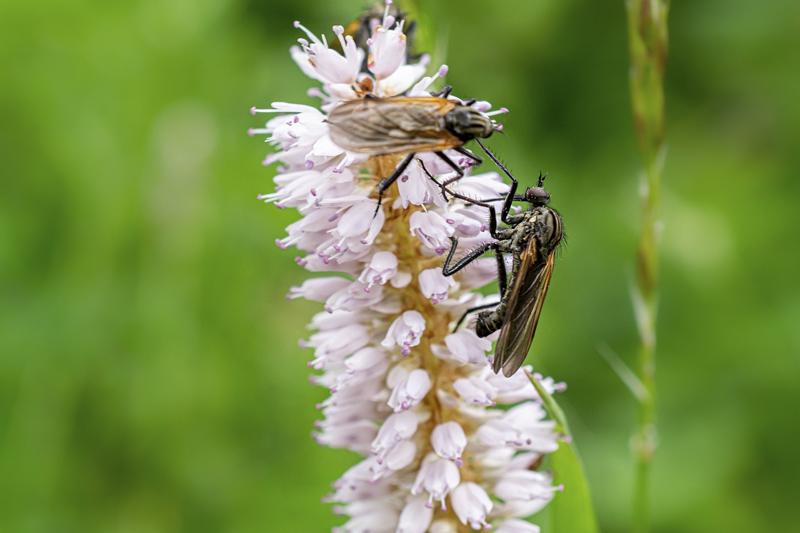By Zaylah Pearson-Good
Fear strikes as an incessant, nasally buzz grows closer and closer. Before you can even anticipate the entry point, a small straw punctures your skin and begins filling the belly of a mosquito, soon to be a crimson balloon. The bug simultaneously injects its saliva into your body, producing an itchy, hot welt that can take up to a week to heal. Fever, muscle weakness, hives, and other alarming symptoms can result from bites in those with severe allergies. Mosquitos’ annoying presence, paired with the fact that they are vectors for deadly diseases, leads many of us to wonder if these pests serve any useful purpose at all.
Just like all life on Earth, mosquitoes do indeed have a purpose — as much as we might want to deny it. Having evolved alongside plants over millions of years, mosquitoes serve their ecosystems as pollinators. Feeding primarily on flower nectar, mosquitoes jump from plant to plant, carrying and dispersing pollen like a bee. According to a study published in 2019 in the journal Entomologia Experimentalis et Applicata, mosquitoes can function as generalist pollinators, “somewhat specialized” pollinators, and co-pollinators. They serve a variety of flowering species, including the mosquito flower, Spanish catchfly, the common tansy, yarrow, Canada goldenrod, a vast array of orchid species, and many others. For some orchid varieties, mosquitoes are primary pollinators.
While they do not provide complete nourishment for any one species, the trillions of mosquitoes that exist on our planet are an important part of the food chain. Before mosquitoes even mature, fish, frogs, turtles, and dragonflies consume their larvae. Dragonflies are one of mosquitoes’ top predators. Feeding on both larvae and the winged adults, dragonflies are believed to consume hundreds of mosquitoes each day, according to the National Audubon Society. Birds and bats are also grateful for the added nutrition that mosquitoes provide. Some of the top consumers of these pests include the nighthawk, purplemartin, Eastern bluebird, yellow warblers, hummingbirds, house wrens, and downy woodpeckers, reports the National Wildlife Federation.
Despite their seemingly desperate thirst for blood, plant sugars are the main source of food for mosquitoes. In fact, only a small percentage of mosquitoes consume blood at all. Of the approximately 3,500 species of mosquitoes that exist worldwide, it is believed that only 6% of species bite humans, reports the Forest Pre- serve District of Will County. Of that percentage, it is only the females that are laying/producing their eggs that seek out the protein found in blood. Males do not bite at all.
We seem to have a particularly ferocious stock of female mosquitoes here in Crestone, making that 6% figure seem even more shocking. Even the most outdoorsy of us think twice before venturing outside as we hear the whiny buzz of mosquitoes knocking at our windows. The knock is harder for some than others; these pests seem to prefer certain blood types over others. According to Unity Point Health, blood-sucking mosquitoes are most attracted to Type O blood, with Type A as their second choice. They also seem to be more drawn to those who are pregnant, sweating, exercising, wearing dark colored clothing, or have a higher body temperature or high cholesterol.
There is no denying that mosquitoes are one of the greatest downfalls to summers in Crestone. As a community concerned with keeping our ecosystem in balance, however, we should aim to see their value and work with nature to manage their numbers. Supporting your local bird, bat, and aquatic life populations is an important strategy.
Other suggestions include preventing larvae growth by emptying standing water daily. Survey your yard for mosquito breeding grounds such as bird baths, gutters, and buckets, and make sure you drain them regularly. Additionally, try to avoid using harsh insecticides that also kill critical pollinators, such as bees and butterflies. We need all the pollinators we can get, including mosquitoes.


